Retail aisles overflow with products, yet mine could vanish in the noise. I must grab attention fast, or I lose the sale entirely.
Display packaging boxes are promotional containers that both protect and present products, using printed graphics and custom structures to attract shoppers and prompt instant purchases.
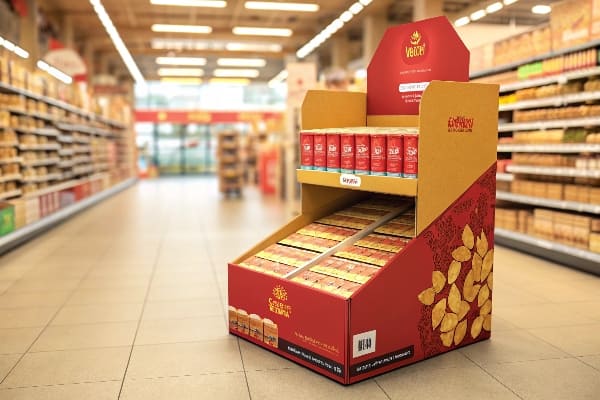
Shoppers decide in seconds. If my packaging speaks first, they stop, touch, and buy. Below, I unpack every key point so you can choose the right display solution with confidence.
What is a display box?
Crowded shelves cause confusion. A plain carton hides my work, while a display box turns products into silent salespeople who greet every passer-by.
A display box is a self-contained package engineered to open or fold into a mini stand that both stores and showcases products at point of sale.
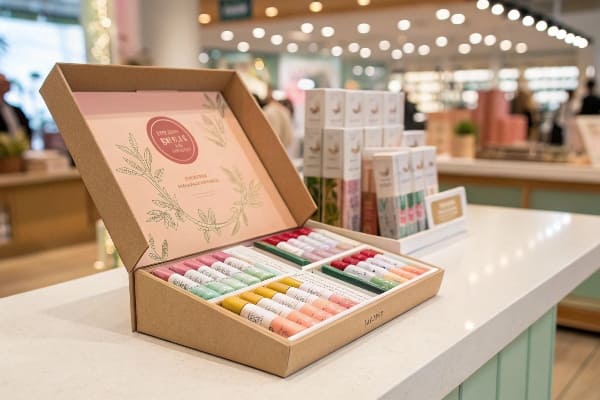
Form and Function
A display box uses perforations, crease lines, and locking tabs so store staff convert shipping mode to display mode1 in seconds. This simple change cuts labor costs.
Key Types
| Type | Common Use | Setup Time | Space Efficiency |
|---|---|---|---|
| Counter display | Small impulse items | Under 1 minute | High |
| Shelf-ready | Snacks, cosmetics | 2 minutes | Medium |
| Floor stand | Bulk packs | 5 minutes | Low |
Why I Prefer Them
- Protection first. Products travel safely because the box starts as a closed shipper.
- Instant branding. When opened, printed flaps form a vivid backdrop.
- Reuse. After restock, the same unit folds away or recycles.
I once shipped a new broadhead line in plain cartons. Retailers stuffed them in generic bins. Sales sagged. Next run, I used counter display boxes2 with sharp hunting graphics. Sell-through doubled in the first week, proving structure matters as much as art.
What are cardboard display boxes?
Wood and metal look strong, yet they cost more and ship heavy. Cardboard delivers similar impact with lower freight and greener appeal.
Cardboard display boxes are paper-based structures made of corrugated or solid board, printed and die-cut to present goods while remaining lightweight, recyclable, and budget friendly.
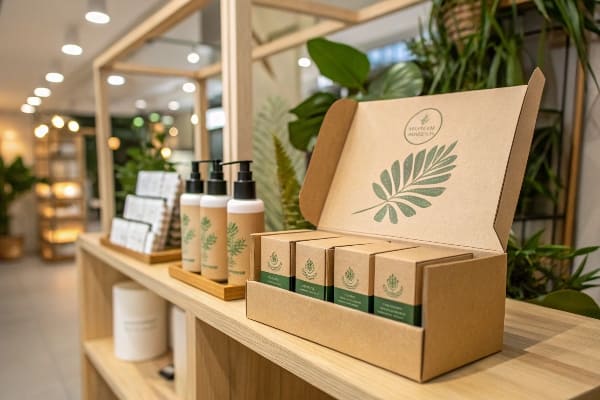
Material Choices
| Board Grade | Flute | Best For | Strength | Print Quality |
|---|---|---|---|---|
| E-flute | Thin | Cosmetics | Low | Excellent |
| B-flute3 | Medium | Snacks | Medium | Very good |
| Double wall | BC | Tools | High | Good |
Production Flow
- Design – I sketch size and locking tabs.
- 3D Rendering – My team checks shelf fit.
- Prototype – Popdisplay sends a white sample in 48 hours.
- Print Proof – Colors locked by digital proofing.
- Mass Run – Three lines finish 20,000 units in four days.
Sustainability Edge
Cardboard earns trust with eco-logos and FSC marks4. Hunters value wilderness, so a green package aligns with their ethics. After shows, dealers flatten and recycle units instead of trashing bulky fixtures.
Last fall, my crossbow broadhead launch5 used B-flute countertop displays. Freight dropped by 30 %, letting me reallocate budget to influencer ads without raising overall spend.
What are the benefits of custom display boxes?
Generic packaging saves time but loses identity. Custom display boxes speak my brand language on every panel.
Custom display boxes increase brand recall, optimize fit, reduce waste, and deliver higher conversion rates by matching exact product, retail space, and visual identity needs.
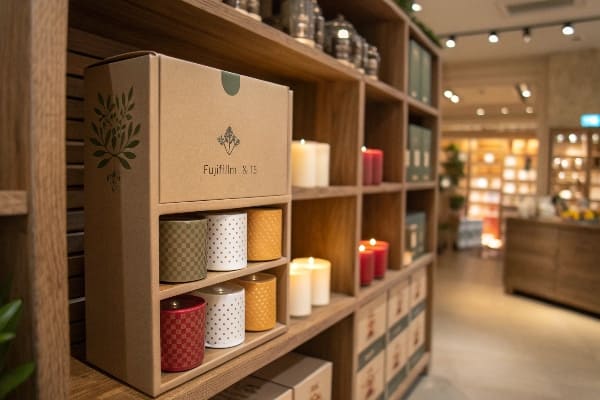
My Top Benefits
1. Precise Fit
A bow string wax tube rattled inside stock cartons. A custom cavity held each tube firm, cut breakage to zero, and trimmed excess board.
2. On-Brand Story
I print lifestyle images of hunters at dawn. The art sparks emotion and aligns with Barnett’s rugged voice.
3. Retailer Compliance6
Chain stores dictate footprint sizes. Custom boxes7 hit those specs, avoiding costly relabels.
4. Cost Control8
| Cost Element | Stock Box | Custom Box |
|---|---|---|
| Unit price | Low | Medium |
| Damage returns | High | Low |
| Marketing impact | Low | High |
A common myth is that customization always costs more. In reality, better sell-through and fewer returns offset any premium. My first custom run paid for itself after one reorder, proving the model.
What is the description of packaging boxes?
Teams often swap terms. Clients ask for “boxes,” “inserts,” or “display units.” Clear definitions avoid mismatched quotes.
A packaging box is any container designed to hold, protect, and transport goods, ranging from plain corrugated shippers to high-graphic retail displays.
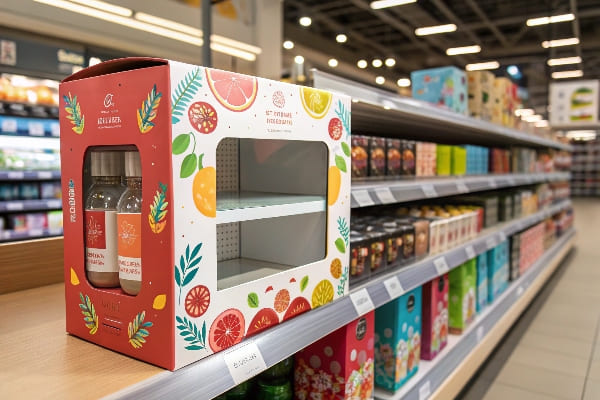
Classification Matrix
| Dimension | Protective Shipper9 | Retail Carton | Display Box |
|---|---|---|---|
| Primary purpose | Transit | Shelf presence | Dual transit + display |
| Graphics | Minimal | High | High |
| Setup | None | None | Tear-off or fold |
Choosing the Right Box
- Define goal. Is it to survive freight or to win shelf space?
- Measure product. Add clearance for inserts and folds.
- Assess channel. E-commerce needs crush resistance10; in-store needs visibility.
- Plan end-of-life. Recyclable materials please eco-minded buyers.
When I coached a start-up coffee brand, they shipped beans in glossy display cartons. Freight dents ruined the finish. I switched them to a plain double-wall shipper outside and a sleek display box inside. Damage claims vanished, and the unboxing wowed retailers.
Conclusion
Display packaging boxes turn shipping costs into marketing power, protect goods, meet retailer rules, and let my story speak first on the shelf.
Learn about the best practices for converting shipping to display mode to save time and reduce labor costs. ↩
Explore this link to understand how counter display boxes can enhance product visibility and sales effectively. ↩
Explore the advantages of B-flute packaging, especially for snacks, and how it can enhance your product’s appeal. ↩
Learn about eco-logos and FSC marks to understand their importance in sustainable packaging and consumer trust. ↩
Discover strategies for launching outdoor products like crossbow broadheads effectively, including packaging and marketing tips. ↩
Learn about the significance of retailer compliance to avoid costly relabels and ensure smooth operations in retail environments. ↩
Explore how custom boxes can enhance branding, reduce damage, and improve sales performance. ↩
Understanding cost control can help you make informed decisions about packaging that maximize profits and minimize losses. ↩
Understanding Protective Shippers can enhance your shipping strategy, ensuring product safety during transit. ↩
Exploring crush resistance in packaging can help you optimize your e-commerce logistics and product presentation. ↩

